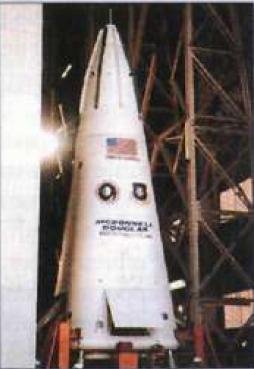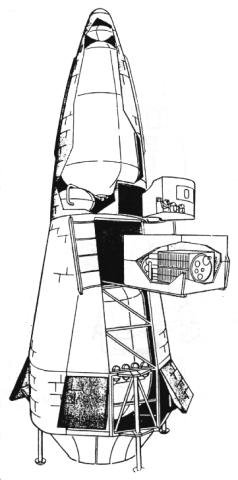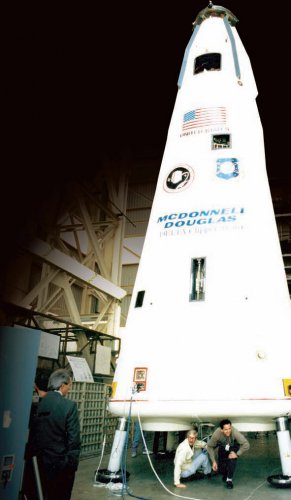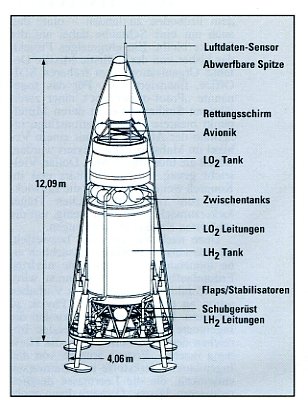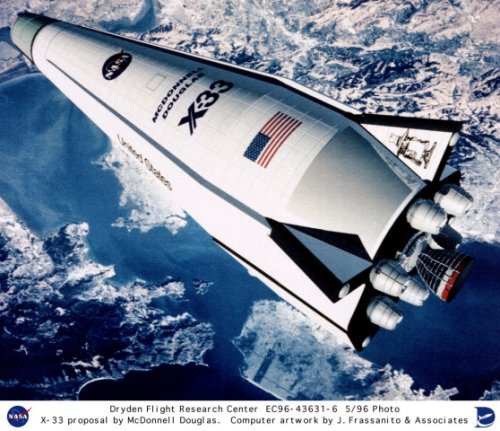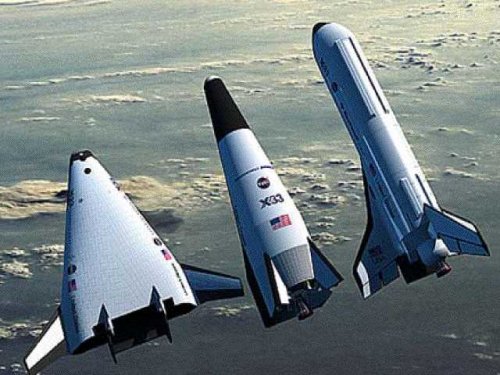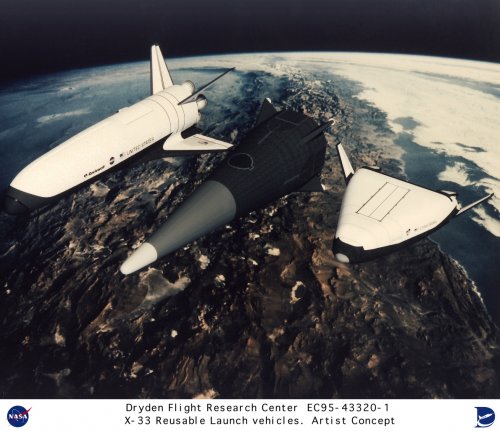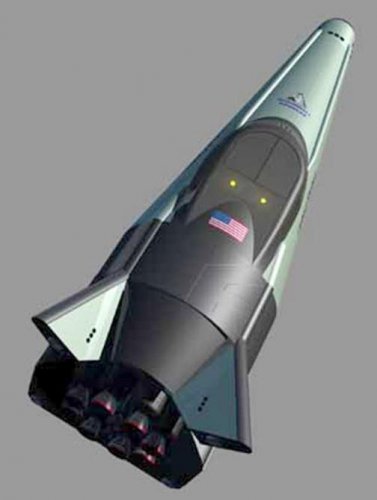Abraham Gubler said:
I think NASA’s greatest problem with DC-X and DC-Y was that McD wanted to revolutionise space travel by producing the first non-experimental, certified space vehicle. That way any competent agency or enterprise could purchase space vehicles for their use returning NASA to the business of wind tunnel modelling…
As a recent participant to the Australian government’s future conference I tried to raise some interest in DC-X. Limited to 500 words here was my written proposal.
Cheap, Easy Access to Space
By Abraham Gubler for the Australia 2020 Forum
[snip]
Despite this highly impressive performance the DC-X program was abandoned because of the bureaucratic and political will of the US Government. DC-X was originally funded by the US Air Force as part of research into the second generation ballistic missile defence (BMD) system ‘Star Wars’ and with a change of US Government in 1992 lost its funding. The US space agency NASA briefly funded more successful trials but cancelled the program to concentrate on far less efficient spacecraft that were not designed for civil certification.
The DC-X spacecraft could be resurrected by the Australian government and industry in cooperation with the USA if a relatively small amount of funds was made available. Funding required would be in the realm of one to ten billion but would be far less than the potential earnings and efficiency savings. By proving the concept of the certified space craft and building them in Australia not only would cheap and easy space access be made available but Australian industry would benefit from the massive global demand. Much of the risk reduction work has been done it just requires visionary investment.
While I would agree totally with your overall philosophy, especially your conclusions, I don't think civil certification entered into it that much. In those days, no one even had any idea on how to civilly certify a spacecraft. For that matter, they still don't. At least for the first few years of Virgin Galactic's operations, people on board will be classified as "participants" in an experimental program, thereby avoiding some of the certification issues, as well as keeping the trial lawyers at bay (without some way to accomplish the latter, there never will be manned US civil space operations).
DC-X/Y/1 were intended specifically to meet the requirements of reliable, repeatable and affordable access to space in order to service the planned space based missile defense system. Such a spacecraft has obvious civilian benefits, but that was secondary and would just be a fortuitous byproduct. Supporting SDI/BMD was its reason for existence. It was also the SDI program, not USAF, that funded it. Its associate with SDI was why the Clinton Administration killed it.
NASA took it up only reluctantly, primarily because it generated so much favorable publicity and under congressional pressure, but was never a supporter. It wasn't invented there, and it was also perceived as a threat to the Shuttle. As we know, they threw it under the bus as soon as they could in favor of their own technology, linear aerospike. This would have resulted in the rather strange X-33, which was hoped would lead to the Lockheed VentureStar, which was planned to have civil as well as military operations. Whether NASA would support any private companies to operate it was another thing, but that issue would have arisen with DC-1 as well.
Of course, the concept went nowhere, but it illustrates a recurring complaint that has been raised about NASA over the years: If you need a spaceship to smuggle a few things or people around the galaxy, you'd hope someone would offer you something like the Millennium Falcon. NASA would want to build you the Death Star.
I am posting here a picture of the conversation that resulted in the birth of the DC-X. Pictured from left to right are Vice President Dan Quayle, then head of the National Space Council,
Army Lt. Gen. Daniel O. Graham, for whom DC-XA would later be named, the prominent American aerospace engineer Max Hunter, and the noted science fiction author, space and science writer and journalist Jerry Pournelle. Based on the discussions that took place at this meeting, Vice President Quayle arranged for SDI funding for DC-X and beyond

